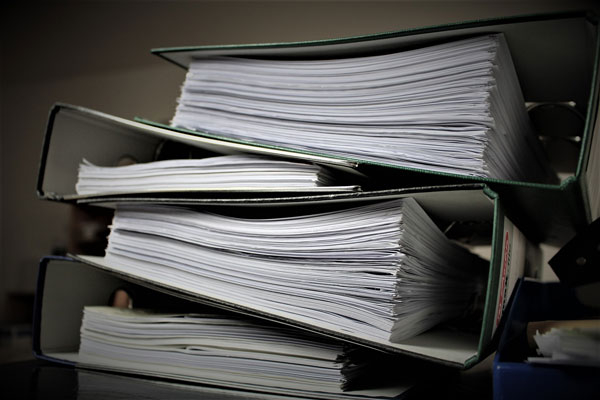
Trash is out. Sustainability is in. Where does your company fit on the spectrum?
A big cultural focus right now is sustainability, especially in industry, and waste is a big part of the sustainability equation. As Mahesh Ramanujam, president of GBCI and COO of the USGBC, says, “By reducing and eliminating the volume and toxicity of waste and materials and aligning green rating systems, we are one step further in transforming the market to be more sustainable.”
And companies that are able to promote their sustainability efforts see real results. One approach is for companies to convert to zero landfill, which means that waste is diverted from landfill disposal. It’s a way of reducing waste and finding alternative ways to reuse the waste.
Almost any business or facility can achieve zero landfill with the right investment of time and energy.
What Is The Difference Between “Zero Waste” And “Zero Landfill?”
It is not uncommon for people to interchangeably use “zero waste” and “zero landfill.” But these two concepts are not the same. Juliana Lytkowski defines zero waste as a broader idea that focuses on the elimination of all forms of waste, requiring an overhaul of how goods are produced and consumed. As Kathryn Kellogg explains on her Going Zero Waste blog, it is about making the choices that avoid waste.
It’s a much grander idea than zero landfill. Morgan Jones at Carbon Trust points out that while there are some companies that are attempting to go zero waste, the concept is a long way from becoming an economic reality for most. The reason, she says, is because the designs, tools, processes, and infrastructure do not yet exist at the scale necessary to achieve zero waste.
Zero landfill, though somewhat less ambitious, is realistically achievable for most companies of any size, as it is simply reducing what is sent to the landfill by reusing, recycling, composting or sending to energy. The distinction, as Eric Lombardi points out, is that zero landfill usually requires incineration of waste to avoid the landfill, but produces ashes that have to be sent to the landfill. Hence, it is not zero waste.
Organizations considering changes to disposal processes should start with the goal of being zero landfill certified.
What Are The Advantages To Being Zero Landfill Certified?
The major organizational impacts of diverting waste from landfills are cost savings and reducing environmental impacts. Mary Mazzoni has compiled a list of companies that have converted to zero landfill and the gains they saw. At one of its plants in Indiana, Subaru saves $1–2 million per year due to reduction and reuse. Unilever claims its journey saved the company $225 million and created hundreds of jobs. True, these are large companies with large impacts, but even scaling it down, smaller companies can see significant results.
Recycle-More notes some additional benefits such as meeting greenhouse gas reduction and energy efficiency goals and legal regulations, and public relations opportunities to highlight a company’s zero landfill certification. Organizations that can prove efforts in sustainability have an advantage over competitors in the marketplace that haven’t yet implemented sustainable strategies.
But you can’t just recycle a few more items and label your company as zero landfill. It is essential that you get third-party certification to add credibility to your efforts.

What Are The Standards For Certification?
There are no universal standards for becoming zero landfill-certified. The standards that you will have to meet are determined by the third-party verifier you choose. Even though a verifier’s certification criteria is not universally recognized, meeting their standards adds credibility to your claims and proves to your stakeholders that you are in fact doing what you are claiming.
How Do I Choose A Certification Company?
Selecting the third-party verifier is probably the most important step in the process because you are choosing both a verifier and a standard in the same selection. Clearly defining your goals for waste solutions ensures that you are choosing a verifier that validates those goals and helps you achieve them. Choosing the wrong company will hinder your organization’s ability to reach goals and become certified.
Northstar Recycling offers some questions companies need to answer for themselves before reaching out to a zero landfill verification company:
- What items are in your waste stream, and would they be easy or difficult to recycle or reuse?
- Is diversion of waste a key priority for your company, and have you set hard goals?
- Is your company targeting the entire supply chain or only disposal practices?
- Are there any restrictions your company wants to be enforced for disposal practices?
Once you have answers, you can begin to consider certification companies and their individual standards.
Covanta strongly suggests doing your due diligence on the front end of the search for a verifier to avoid any surprises. The most important task is to be sure their standards align with your organization’s goals.
Also, consider the reputation of the verifier and whether they have ever worked in your industry. Those that have experience in the same industry may be able to offer insights for improvement and identify any risks the company may be exposed to.
Lastly, it helps to get to know the team from the verifier with which you will be working. Establishing a strong foundation will help the process go smoothly.
Who Are The Certification Companies?
There are numerous certifying organizations to choose from. Some of the most visible companies are:
- Green Business Certification, Inc. (GBCI)
- Intertek
- Underwriter’s Laboratory (UL)
- Green Circle Certified
- The Carbon Trust
- NSF International
What Is The Process For Certification Once I’ve Chosen A Verifier?
Covanta goes on to explain that no matter which third-party certification company you choose, the process for certification will be nearly the same. It usually begins with a site visit in which auditors look at what waste streams are being generated and how they are being managed. They will audit the procedures for waste management and training programs that are in place for employees.
Auditors will also do an intensive review of all records and documentation that demonstrate where waste has gone and how it is managed at its final destination. They may also visit downstream waste outlets to verify your claims.
Once they have completed their audits, they will either grant you certification or leave you with recommendations for improving your processes to meet their certification standards.

Where to Start?
The best place to start is to attend training classes on becoming zero landfill-certified. Many industry organizations, such as the Solid Waste Association of North America (SWANA), offer training programs. Once properly trained, you will be able to take your knowledge and skills back to your company and start implementing changes.
There are some steps you can take without formal training to prepare your facility. Alex Chamberlain at ERA Environmental Solutions suggests getting started by incorporating the essential building blocks of sustainability that we have all been taught: reduce, reuse and recycle. He also encourages making smarter choices about materials before they are brought into your facilities and processes, which is referred to as Environmentally Preferable Purchasing (EPP). Chamberlain explains in another article that EPP is about “front-loading environmental management by knowing the environmental impact of the materials before they enter your facility.”
Kristin Kinder, at Ecova, advises companies to find the right metrics and gather data about the waste their companies produce so they can measure progress thoughtfully. From there, Rick LeBlanc advises that it is important to set specific waste reduction goals for both the short and long terms (e.g. monthly and yearly). These goals will help foster enthusiasm among your team as goals are met and progress is made.
Another important step is to train employees and engage them in waste diversion, and get them to shift their thinking of trash as landfill material to thinking of it as potential resources. Start by raising their awareness of the issues and sharing your company’s data with them.
Now Is The Time To Get Started
The hardest part is getting started. Becoming zero landfill-certified is a huge undertaking that will require investments of time, money and energy. But the potential rewards in cost savings, environmental impact and public perception make the investments not only worthwhile but almost necessary to keep pace with cultural trends toward greater sustainability.
Credits:
MrsBrowngeralt
Geisteskerker
